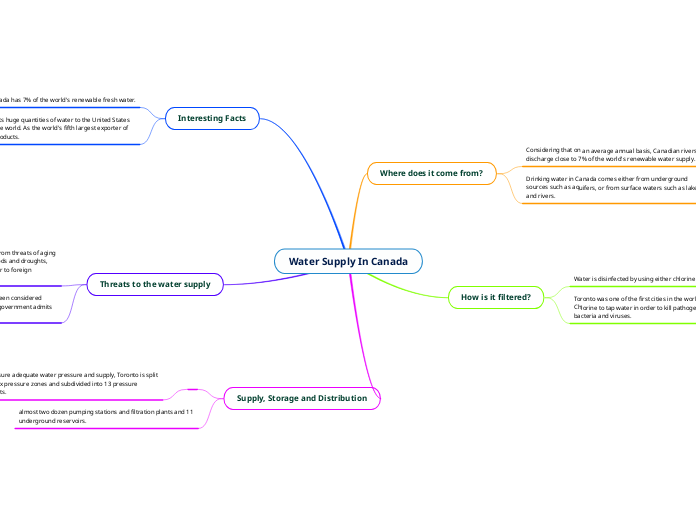Water Supply In Canada
Where does it come from?
Considering that on an average annual basis, Canadian rivers discharge close to 7% of the world's renewable water supply.
Drinking water in Canada comes either from underground sources such as aquifers, or from surface waters such as lakes and rivers.
How is it filtered?
Water is disinfected by using either chlorine or ozone.
Toronto was one of the first cities in the world to introduce Chlorine to tap water in order to kill pathogens such as bacteria and viruses.
Interesting Facts
Canada has 7% of the world's renewable fresh water.
Canada exports huge quantities of water to the United States and all over the world. As the world's fifth largest exporter of agricultural products.
Threats to the water supply
Our freshwater systems are under strain from threats of aging infrastructure, climate change causing floods and droughts, cyberattacks, fracking and the sale of water to foreign markets.
The water in dozens of communities has been considered unsafe to drink for at least a year and the government admits it has failed.
Supply, Storage and Distribution
To ensure adequate water pressure and supply, Toronto is split into six pressure zones and subdivided into 13 pressure districts.
almost two dozen pumping stations and filtration plants and 11 underground reservoirs.
